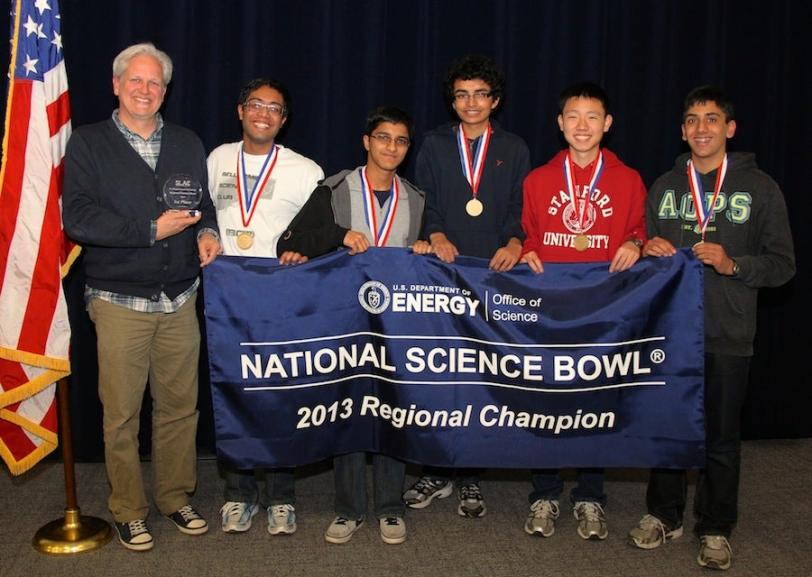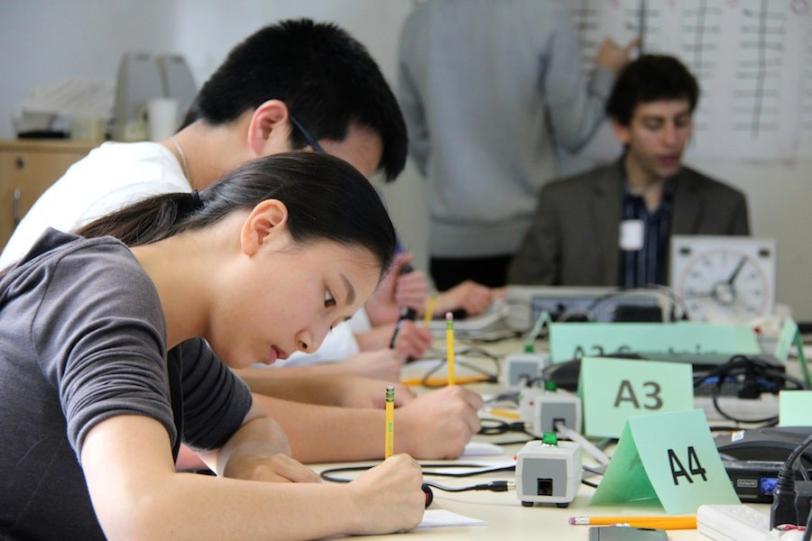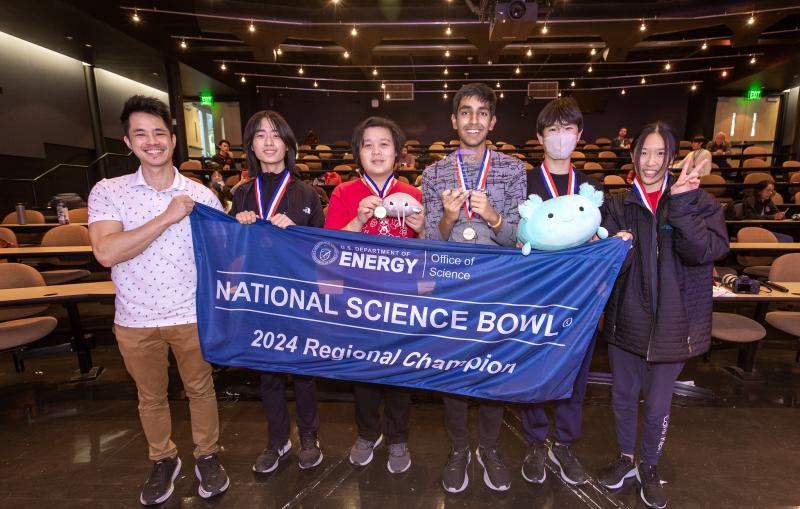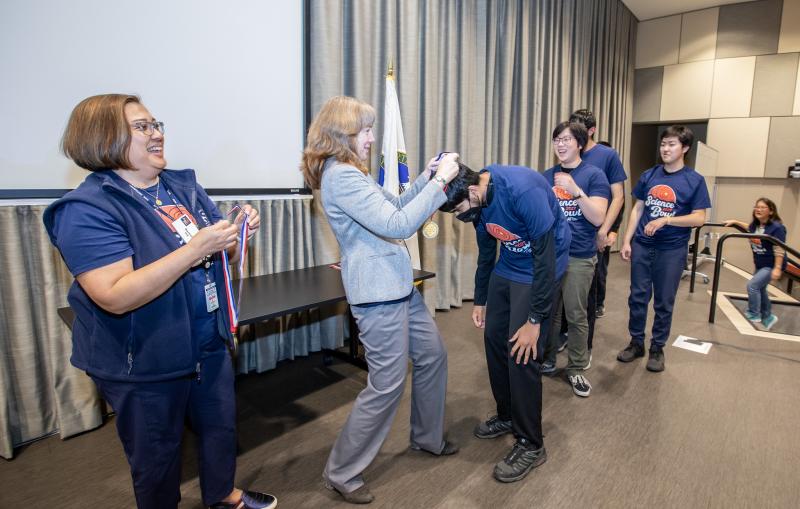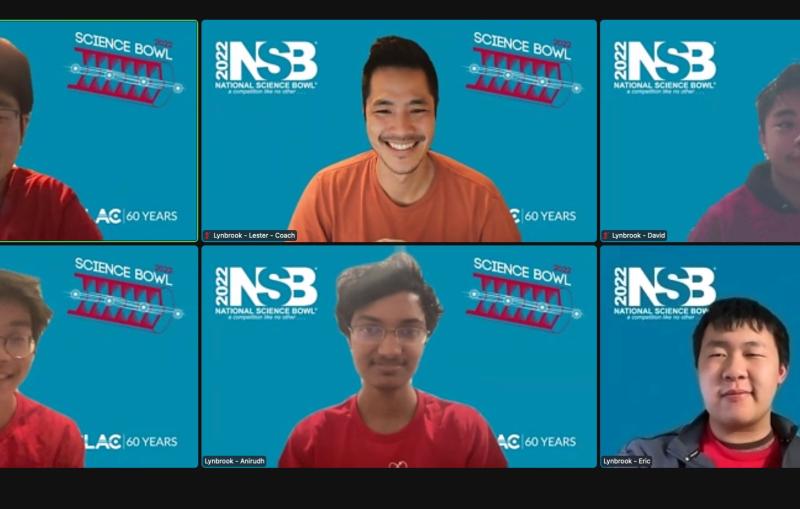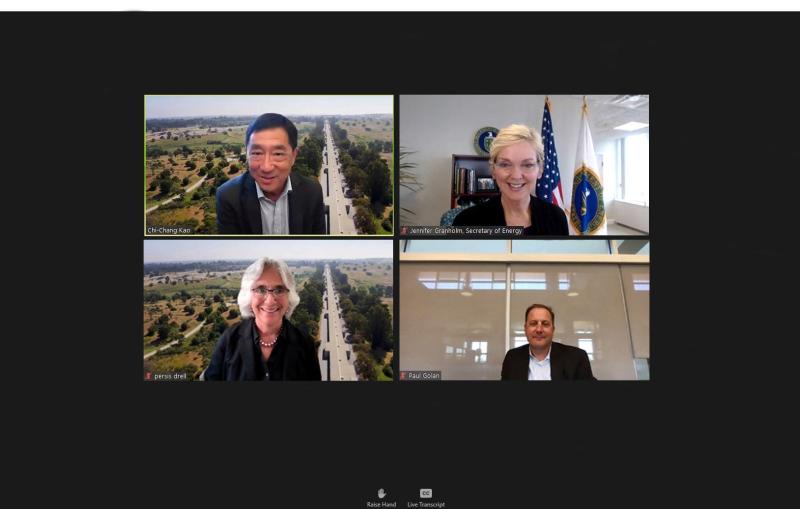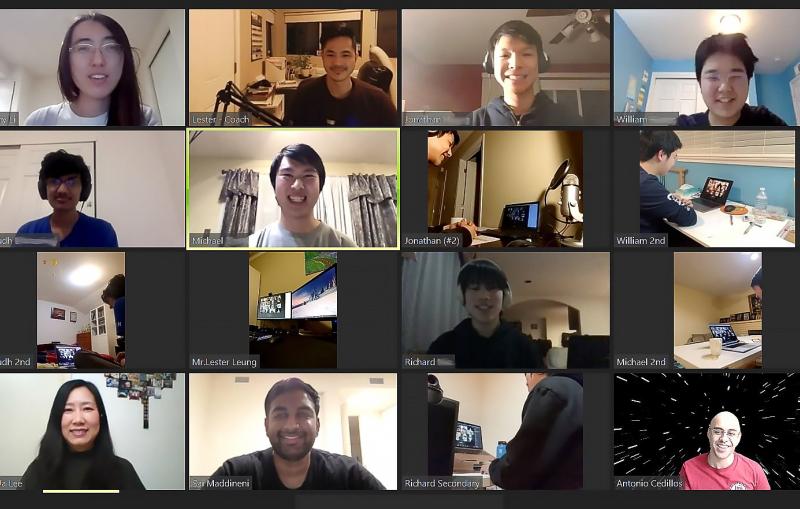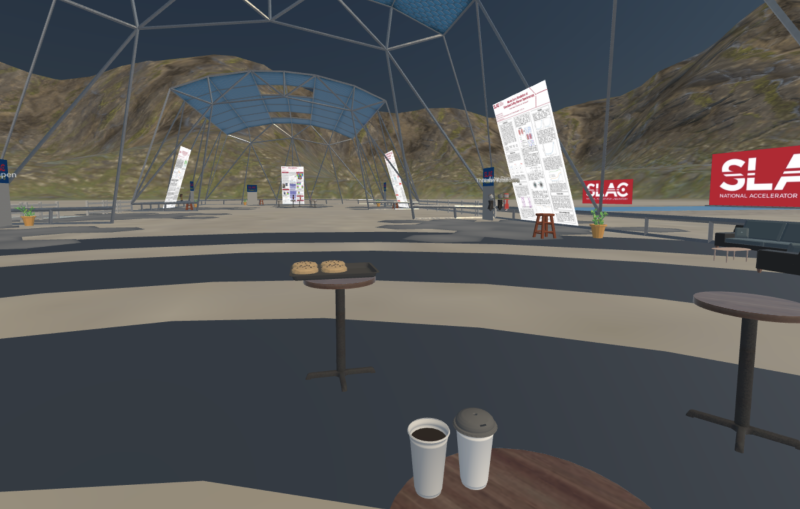Record 30 Teams Compete in Science Bowl at SLAC
SLAC played host to the regional Science Bowl last weekend, with a record 150 high-school students from 30 teams answering tough science questions in the hope of winning the top prize – a trip to Washington, D.C., to compete in the national Department of Energy Science Bowl April 25 to 29.
By Diane Rezendes Khirallah
SLAC played host to the regional Science Bowl last weekend, with a record 150 high-school students from 30 teams answering tough science questions in the hope of winning the top prize – a trip to Washington, D.C., to compete in the national Department of Energy Science Bowl April 25 to 29.
Bellarmine College Preparatory High School of San Jose emerged the victor after taking second place the last two years in a row and fourth place the year before that. For seniors Nikhil Buduma and Yuanqing Xiao, it was well worth the wait: Both competed the past three years, and will at last go on to face the best teams in the country.
Coming in second was The Harker School of San Jose, and third place went to Monta Vista High School of Cupertino.
In presenting the awards on behalf of the DOE, SLAC Director Chi-Chang Kao spoke briefly and warmly to the students, their parents and coaches. He encouraged them in their passion for science and urged them to stay involved, calling it “a fantastic career.”
Kao added that science holds the potential not only to understand the universe better, but also to make society better. Even for students who don’t opt for a career in science, he said, the background will serve them well: “Science gives you the ability to solve problems, no matter what you do.”
Since its inception in 1991, the Science Bowl has drawn 225,000 students to test their mettle against the best of the best around the country. It’s fierce, it’s intense, and it can be nail-bitingly suspenseful.
Students, coaches and parents prepare for months, honing their knowledge not only of science and math, but also of the competition format. The volunteers who run the SLAC contest put in a lot of preparation, too. Scientists vet the questions ahead of time to make sure the answers make sense and SLAC employees, Stanford University graduate students and community members moderate, time the sessions, keep score and run around delivering results and trouble-shooting.
“We’re really grateful to the volunteers,” said Farah Rahbar, SLAC outreach coordinator and organizer of the event. “Their hard work each year makes this event rewarding for all the participants.”
Sixty-eight volunteers ran the event this year, which was the ninth year the lab hosted the regionals.
The day began around 8 a.m. with bagels and juice, the Panofsky breezeway abuzz with far more natural adrenaline than all the coffee in the room could provide.
Students, coaches and family members packed Panofsky Auditorium for welcoming remarks from their SLAC hosts. Then the competition kicked off in earnest with a fast-paced round-robin series, in which pairs of teams went head to head to answer questions in astronomy, biology, chemistry, Earth sciences, physics and math. They had only five seconds to answer; a correct answer gave them a shot at a 20-second bonus question that often required scratch paper and calculations, frequently rendered in scientific notation.
After lunching on pizza, salad and cookies and enjoying the mild temperature and sunshine, teams waited to hear if they would continue on to the afternoon’s elimination rounds. The result? An unprecedented six-way tie, requiring an extra tiebreaker round. Then eight teams went to the afternoon finals, bracket-style.
First-time volunteer timekeeper Ted Sanders was one of the few who knew what it’s like on both sides of the buzzer. A graduate student in applied physics at Stanford, he competed in Science Bowl at Wilson High School in Portland, Ore.
He volunteers, as he puts it, “to relive those dreams and see the high school students. It’s cool to give them an opportunity to be recognized for their knowledge.”
SLAC research software developer and volunteer moderator Daniel Wang said, “It’s inspiring to see the fruits of their efforts. It’s clear they’ve worked hard and take it very seriously. It’s great to see achievement at such a high level.
“It reminds me of what it’s like to be a student again."
For questions or comments, contact the SLAC Office of Communications at communications@slac.stanford.edu.
